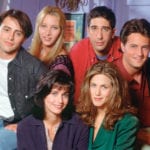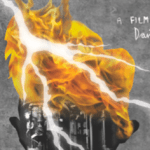 Politics
Politics  Politics
Politics  Weird Stuff
Weird Stuff Ten Bizarre Facts About The Doge Meme
 Our World
Our World 10 Ways Your Christmas Tree Is More Lit Than You Think
 Movies and TV
Movies and TV The 10 Coolest Stars to Set Sail on The Love Boat
 History
History 10 Things You Didn’t Know About the American National Anthem
 Technology
Technology Top 10 Everyday Tech Buzzwords That Hide a Darker Past
 Humans
Humans 10 Everyday Human Behaviors That Are Actually Survival Instincts
 Animals
Animals 10 Animals That Humiliated and Harmed Historical Leaders
 History
History 10 Most Influential Protests in Modern History
 Creepy
Creepy 10 More Representations of Death from Myth, Legend, and Folktale
 Politics
Politics 10 Political Scandals That Sent Crowds Into the Streets
 Weird Stuff
Weird Stuff Ten Bizarre Facts About The Doge Meme
 Our World
Our World 10 Ways Your Christmas Tree Is More Lit Than You Think
Who's Behind Listverse?

Jamie Frater
Head Editor
Jamie founded Listverse due to an insatiable desire to share fascinating, obscure, and bizarre facts. He has been a guest speaker on numerous national radio and television stations and is a five time published author.
More About Us Movies and TV
Movies and TV The 10 Coolest Stars to Set Sail on The Love Boat
 History
History 10 Things You Didn’t Know About the American National Anthem
 Technology
Technology Top 10 Everyday Tech Buzzwords That Hide a Darker Past
 Humans
Humans 10 Everyday Human Behaviors That Are Actually Survival Instincts
 Animals
Animals 10 Animals That Humiliated and Harmed Historical Leaders
 History
History 10 Most Influential Protests in Modern History
 Creepy
Creepy 10 More Representations of Death from Myth, Legend, and Folktale
Top 10 Biopics That Got It Completely Wrong
The biopic has always been a popular genre in Hollywood, and in recent years have been frontrunners at award ceremonies. Always popular with the Academy Awards, the Oscar-bait pictures could be seen as the easy way of getting nominated. When executed well, a biopic can succeed across the board or at the very least there’s the assumption that they’ll bag themselves a few nominations.
But for every successful biopic there is several poorly executed biopics that really missed the mark. Whether it was poor casting, bad writing or taking a little too much artistic license with the truth, here’s 10 of the worst biopics to have graced our screens.
10 New Facts About Famous People And Places
10 The Audrey Hepburn Story (2000)
What do we remember about Audrey Hepburn? For some, it might just be the poster for Breakfast at Tiffany’s. For those of us who know more about her, we remember her incredible humanitarian work as a UNICEF Goodwill Ambassador and her involvement in raising money for the Dutch Resistance during World War II as a young girl. Sadly, The Audrey Hepburn Story focuses heavily on the former, putting stress on her Hollywood career above any other aspect of her life.
Something we all remember about Hepburn was her poise and decorum that perpetuated through her movement, voice and mannerisms. Unfortunately, despite getting the look of Hepburn spot on, Jennifer Love-Hewitt doesn’t quite manage to bring to life these iconic Hepburn traits. Audrey Hepburn was and always will be a Hollywood icon, but she was much more than that. The Audrey Hepburn Story skims over some of the major events in Hepburn’s life, leaving us who know better noticing the heavy focus on her years in Hollywood and those who don’t are left with no better understanding of what a sensational person Audrey Hepburn was.
9 Bonnie and Clyde (1967)
The romanticised, almost idyllic relationship depicted in the 1967 film is based on the widely speculated romantic relationship between Bonnie and Clyde. The film glosses over the murders, despite the real-life couple being believed to have murdered at least 9 police officers and 4 civilians. Their robberies are presented as almost benevolent, robbing large banks, implying that there would’ve had little damage. In actuality, they had a preference for gas stations and small shops.
Today, Bonnie and Clyde is seen as a ground-breaking for the time it was made, including a review from the BBC stating that it ‘shook the very foundations of Hollywood, playing a major role in steering the US film industry towards a new, exciting, history-defining direction.’ As a film, they’re not wrong. It’s an action-packed, violent film that received 9 Academy Award nominations. As far as entertainment value goes, Bonnie and Clyde is a winner. But as a biopic, it heavily simplifies the lives of the twosome and strays far from reality. Even Blanche Barrow (Clyde’s sister-in-law and member of the Barrow Gang) stated that she ‘did not recognise much of anything in the story, least of all herself.’ One to enjoy, but take with a heap of salt!
8 The Runaways (2010)
You’d think having a film based on Cherie Currie’s autobiography with Joan Jett as an Executive Producer would mean that there’d be a little more depth into the story of The Runaways. The hope would be that since the film is about one of the pioneering all-female rock bands of the 1970s that we’d see more of the band themselves. Instead, the most developed character is the band’s original manager, Kim Fowley.
Kristen Stewart and Dakota Fanning both attempt to channel Jett and Currie respectively, but this seems to be reduced to facial expressions and posture. On top of that, the other band members are rarely seen let alone heard. Clearly the lives of Sandy West and Lita Ford weren’t seen as worthy of any real screen time. The best thing about this biopic is the music. You’re better off listening to the band’s actual albums (The Runaways- The Mercury Albums Anthology will give you everything you need).
7 Amelia (2009)
Amelia is a prime example of how a strong cast can’t save a dull script. Hilary Swank does her best effort as Earhart with Richard Gere as husband George P. Putman. Unfortunately, the star cast is the only noteworthy part of this film. Amelia appears to tick every box on the biopic checklist, but sadly this leaves the film feeling stagnant.
Pretty much everyone knows the story of Amelia Earhart; her optimism and ambition and mysterious disappearance of an ending. With a biopic, especially one with such a famous ending, we expect for them to actually acknowledge the protagonist’s tragic ending. Yet, ‘Amelia doesn’t even skim the surface’. Earhart’s story still has the potential for an epic movie, one that does her justice rather than a lukewarm attempt to try and brush over what is in essence a tragic tale.
6 Liz and Dick (2012)
Retelling the story of one of the most publicised and scandalous relationships ever in Hollywood, Liz and Dick should have been as epic as the two stars it was about. Starting with their introduction on the set of Cleopatra and ending with Burton’s death 20 plus years later, Elizabeth Taylor (Lindsay Lohan) and Richard Burton’s (Grant Bowler) relationship is presented as nothing more than a series of rows across a choppy timeline that is never quite clear to the audience. Little to no effort is made to show the aging of the characters with Lohan supposedly playing 52-year-old Taylor by the end of the film.
With a woman as iconic as Elizabeth Taylor, there is little room for error in her portrayal. Unfortunately, Lohan never seems to be able to fully grasp the aura that surrounded Ms Taylor. Even if her look could be described as somewhat believable, her voice remains unchanged, and we are no more convinced of Lohan as Taylor than we are that there is only a 7-year age difference between the couple. The whole film just feels like a big shame, as a story such as this deserves a film that is larger than life like the stars themselves. Instead, we’re left hungry for real pair after watching these amateur impersonations.
5 The Greatest Showman (2017)
Had P.T. Barnum been around today, there’s no doubt that he would have loved the depiction of himself in the 2017 blockbuster. The public cheating scandal with Jenny Lind may not have been true, but the dark reality of his shows was far worse. The notion that his troupe were like a family to him is almost laughable.
Barnum’s first real “exhibit” was Joice Heath, a black woman who he “rented”, claiming she was the 161-year-old former nurse of George Washington. Barnum was able to lease Heath for a year, despite slavery being outlawed in the State. Even worse, after Heath had passed, Barnum decided to sell tickets to a live autopsy, where 1,500 people paid to watch the poor woman get cut open for entertainment purposes.
Hugh Jackman’s portrayal of Barnum’s worse character trait is abandoning his family to further his personal success, which is miniscule compared to the reality.
4 The Far Horizons (1955)
Rated in Time Magazine as one of most historically misleading films, The Far Horizons doesn’t have any excuse for the complete fabrication of the events of Lewis & Clark and Sacagawea. The real, historically significant event- seeing the Native American guide and interpreter help the Western explorers- could have made an exciting adventure film all on its own.
The insult of adding a fabricated love story between Sacagawea and William Clark belittles Sacagawea as it implies that a romantic relationship must happen in order to add value to a female character. Not only that, but it then makes her husband, Toussaint Charbonneau, the villain, when in actuality Sacagawea was only ever on the expedition originally as her husband was their guide. If the embellished story wasn’t bad enough, but the choice of casting was atrocious. Donna Reed as Sacagawea would never be acceptable today, but even for the 1950s having the actress in brown-face is pretty appalling.
3 Diana (2013)
It says a lot about a film when the actor playing the lead regrets making the film, and that’s exactly the case with Naomi Watts as the late Princess Diana. No one can deny Watt’s dedication to the role, studying hours of archived footage and even wearing the late Princess’ clothes. Unfortunately, she fell victim to a poor script which, as the review from The Guardian summarises perfectly, ‘creates a distorted, sugary and preposterous impression’ and a ‘highly simplistic view of events’.
The film dedicates the final years of her life to her romance with heart-surgeon Dr Hasnat Khan and neglects other major aspects of her life. Where’s the presence of Prince Charles who, although divorced, was still a prominent part of her life? Why are her children and humanitarian work not the centre of her story when this is what she dedicated her life to? The script gives the actors very little to work with and the only time we get to see any real twinkle of Diana is the moments when the actors don’t speak, not restricted by the wooden script and can just be as the characters.
2 The Conqueror (1956)
Genghis Khan, the founder and first Emperor of the Mongolian Empire. An epic action movie waiting to happen. Of all actors to play him, John Wayne is not one who fits the bill. And yet the all-American actor got the role of the Emperor after Marlon Brando (an equally inappropriate choice) declined.
The casting of Wayne is only one of many poor choices in the film. In fact, there’s not much that the film got right. The dialogue of the script was equally bad, with writer Oscar Millard wanted to give it ‘an “archaic” flourish’ later saying that he ‘thought this would give it a certain cachet’ and it was ‘a mistake I have never repeated’. Unsurprisingly, The Conqueror is not historically accurate. In the film, Khan (AKA Temujin) abducts Börte, but in actuality it was an arranged marriage when he was 9 and she 10. Unlike in Bonnie and Clyde, the lack of historical accuracy isn’t excused by a well-made picture. Instead, it misses on every level.
1 Nina (2016)
The number one spot is left for the lowest ranking picture on Rotten Tomatoes. Coming in at only 2% and described as a ‘wholly misguided tribute to its subject’s searing talent and enduring impact.’ Before the film was even released, there was an uproar amongst the public at Zoe Saldana’s casting as Nina. The actress is an Afro-Latina of Dominican and Puerto Rican descent and consequently was not a good choice to play the African American singer and activist. Saldana herself even admitted ‘I didn’t think I was right for the part’.
The film does a great disservice to the talent of the High Priestess of Soul, parading her only as an alcoholic who lost everything. The accuracy of the film has been criticised by Simone’s daughter, Lisa Simone Kelly, who stated that ‘Clearly, it is not the truth about my mother’s life and everyone now knows that. This is not how you want your loved ones remembered.’ Instead of giving your time to this poor biopic, instead learn about Nina Simone in the 2015 documentary What Happened, Miss Simone?
There will always be interesting, movie-worthy, real-life stories to be told. But the biopic is by no means the easy way into award season. The wrong casting or editing the story too much can damage the film’s credibility instantly.
A good biopic comes from knowing the balance between getting the story right and keeping it interesting. Sometimes, the story doesn’t need the exaggerations and fabrications. It is always crucial that we need to be able to recognise those who the picture is dedicated to. Not simply by clothes, make-up or prosthetics, but by studying and understanding the individual in and out, capturing their essence on camera.
Top 10 Spooky Tales Based On Weirder True Stories








